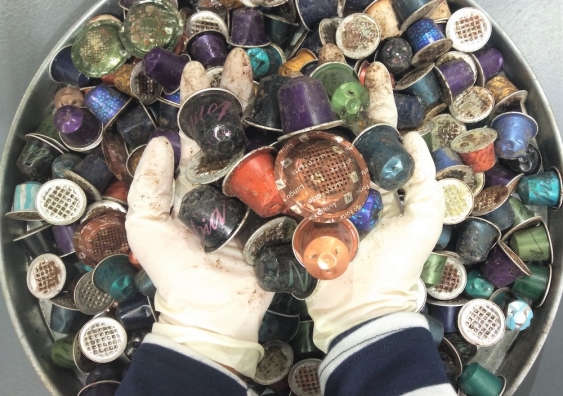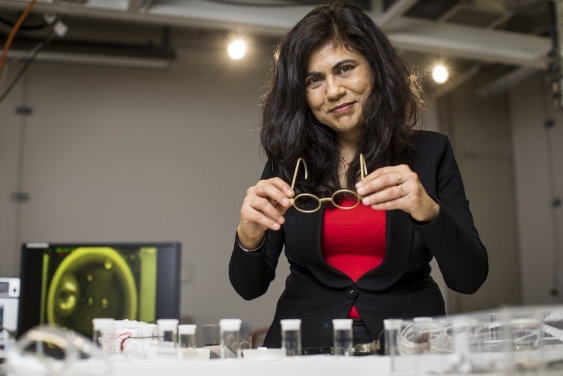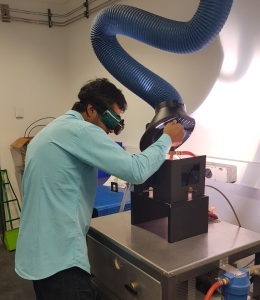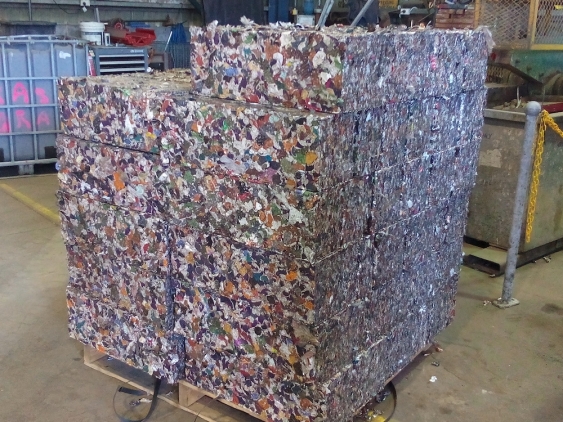New aluminium recycling can drive manufacturing prosperity
A recycling breakthrough at UNSW Sydney offers new possibilities for the re-purposing of polymer-laminated aluminium products, such as food and coffee packaging.
A recycling breakthrough at UNSW Sydney offers new possibilities for the re-purposing of polymer-laminated aluminium products, such as food and coffee packaging.

Stuart Snell
0416 650 906
s.snell@unsw.edu.au
Research by the UNSW Sustainable Materials Research and Technology (SMaRT) Centre has found a way that could start a new ‘green aluminium’ manufacturing revolution and bolster government 2020 budget and industry efforts to advance Australian manufacturing, increasing sustainability and creating jobs.
The new technique to recover aluminium from complex, multilayered packaging is based on the microrecycling science pioneered by the SMaRT Centre under the leadership of its Director, Professor Veena Sahajwalla, and builds on the Centre's waste materials innovations including Green Steel and Microfactorie technologies.

Recycling using new technologies can be a foundation for the manufacturing of high-quality materials from our waste resources: Professor Veena Sahajwalla. Photo: Anna Kucera
The research, published across two international scientific journals, demonstrates there is now a way to sustainably recycle polymer-laminated aluminium packaging (PLAP) materials, such as post-consumer food and coffee packaging, into high-quality aluminium and be a potential source of high-energy hydrocarbon products.
“We developed Green Steel technology where we extract hydrogen and carbon from old rubber tyres and plastic as an innovative and green pathway in steelmaking, and we now can develop new ‘Green Aluminium’ with our novel technique called Thermal Disengagement Technology (TDT),” said Prof. Sahajwalla, whose SMaRT Centre is part of UNSW's Faculty of Science.
“Recycling using new technologies can be a foundation for the manufacturing of high-quality materials from our waste resources, as we seek to develop greater sovereign capability along with economic prosperity.”

A researcher works on the rapid transformation process of food packaging waste into value-added aluminium alloy by using a lab-scale Arc furnace at the SMaRT Centre at UNSW Sydney.
Thermal Disengagement Technology
The new Thermal Disengagement Technology, described in scientific publications Springer Nature and the Journal of Cleaner Production, offers an innovative, efficient and sustainable microrecycling technique to separate the materials in complex polymer-laminated metal packaging waste. TDT can transform the aluminium into a clean and green metal, allowing it to be extracted in a way that it can be used as a high-quality material for manufacturing, while minimising residual waste.
Prof. Sahajwalla said: “Green Steel and green manufacturing are capabilities we have been pioneering for over a decade. The jobs and sustainability revolution our government wants to create as announced in its 2020 budget can get a boost from some of these sort of existing innovations where industry and researchers are already successfully partnering.
“Using waste-reforming technology can create new supply chains and jobs, especially in regional locations, because it doesn’t have to be large scale nor expensive. That is why I see a future where recycling and manufacturing are aligned, where waste and recycling become part of the manufacturing supply chain, and that is important in this new COVID era where we now highly value ‘sovereign capability’.”
In one demonstration of how SMaRT is helping to create these new supply chains and aligning these sectors, it has connected an e-waste recycler directly with a steel maker enabling undervalued metals and plastics destined for overseas, landfill or incineration, to be used as feedstock.

A pallet of compressed coffee pods used in the research by the UNSW Sustainable Materials Research and Technology Centre.
Waste polymer laminated aluminium packaging (PLAP) material was analysed by Thermal Disengagement Technology (TDT) to explore the prospect of recycling the metal-polymer multilayer materials with minimum contamination and zero waste of metal (aluminium). Laminated polymers on the metallic surface essentially demand some extra effort and energy to recycle the metal in its original form. In these studies, the effect of the laminated polymers of the aluminium surface to protect the surface contamination by means of oxidation was explored. The rate of the transformation of the polymers in the air atmosphere is higher than the rate can be achieved in an inert atmosphere.
TDT to recycle the polymer laminated aluminium packaging with and without an inert gas supply has been developed to produce specifically high-quality aluminium. The oxidation of the aluminium surface in air media was higher and non-uniform compared to the inert media. At 550 degrees centigrade, the complete degradation of the polymers was observed within 20 minutes and the recovery of the aluminium was achieved without any metal loss with a very high purity. The surface analysis of the laminated and non-laminated TD aluminium confirms that the rate of oxidation in oxygen-rich atmosphere for disengaged aluminium from PLAP is 80-90 per cent lower and the polymers can act as the protection against the oxidation of the aluminium surfaces even after the complete degradation of the polymers by leaving the carbonaceous residues behind onto the surfaces.
The level of purity of recovered aluminium is achieved ~96-99 per cent with minor impurity/alloying elements. Oxidation of the recovered aluminium was controlled and detected less than 1 per cent by the new and innovative TDT. The cleaner aluminium produced by this process has the desired scalability which is required for taking laboratory batch reactions towards industrial production.
The recycling of PLAP materials demands a process where whole materials can be processed and recycled with a minimum waste of energy and materials. TDT overcomes these constraints. Several recycling techniques including traditional smelting have been practised by the researchers and professionals. But the major problems associated with the traditional smelting of PLAP materials are excessive material loss and lack of controlling aids during the smelting.
In many countries, waste polymer laminated metal packaging materials, along with other municipal solid waste, is going to landfills or incineration and some of the materials are recycled in metallic forms from the bottom ash components by industrial separation. The low-value packaging materials containing polymers and aluminium found in the MSW draw no interest from recyclers.
Full details about the new Thermal Disengagement Technology can be found in articles by scientific publications Springer Nature and the Journal of Cleaner Production.